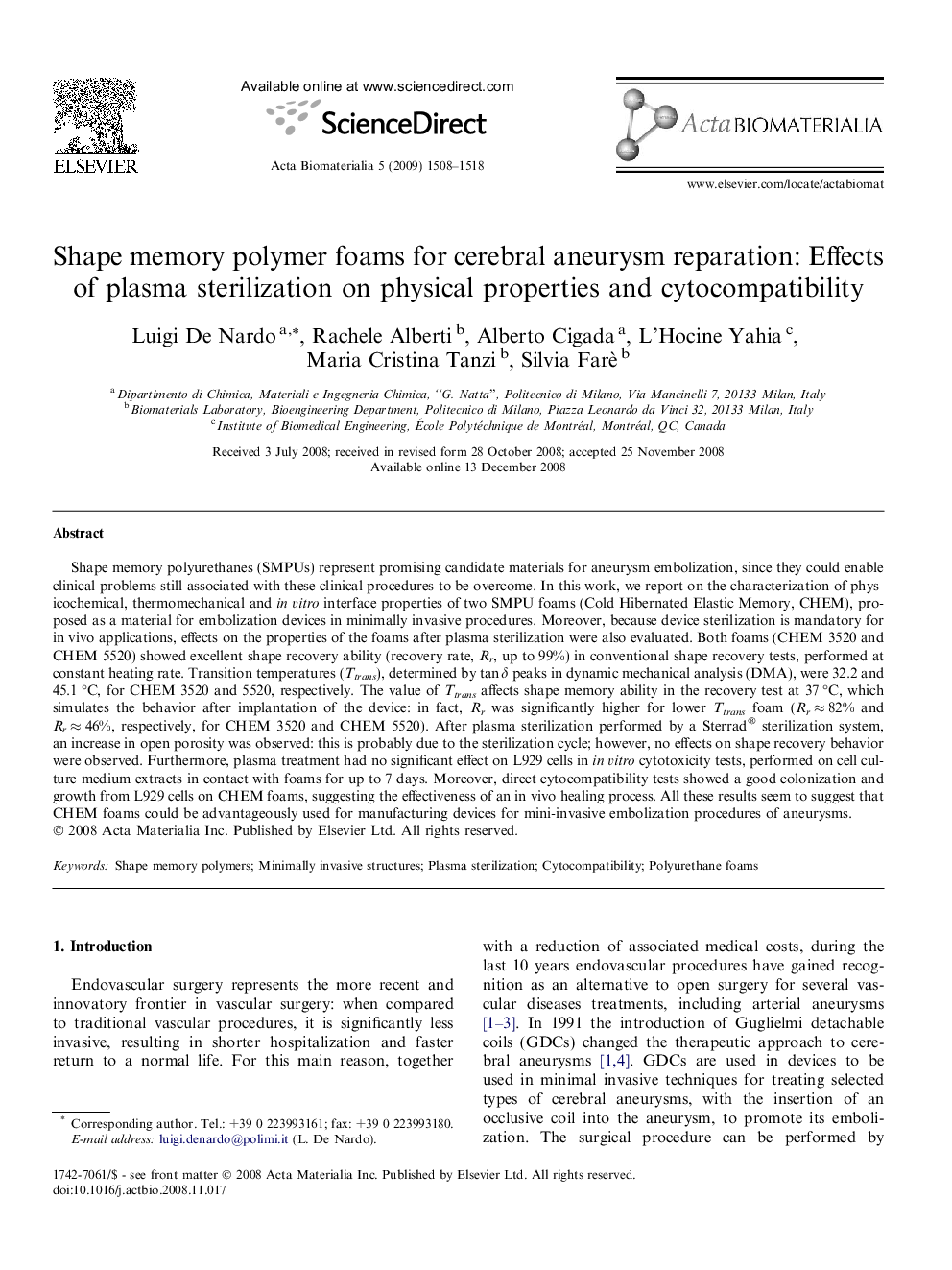| Article ID | Journal | Published Year | Pages | File Type |
|---|---|---|---|---|
| 1306 | Acta Biomaterialia | 2009 | 11 Pages |
Shape memory polyurethanes (SMPUs) represent promising candidate materials for aneurysm embolization, since they could enable clinical problems still associated with these clinical procedures to be overcome. In this work, we report on the characterization of physicochemical, thermomechanical and in vitro interface properties of two SMPU foams (Cold Hibernated Elastic Memory, CHEM), proposed as a material for embolization devices in minimally invasive procedures. Moreover, because device sterilization is mandatory for in vivo applications, effects on the properties of the foams after plasma sterilization were also evaluated. Both foams (CHEM 3520 and CHEM 5520) showed excellent shape recovery ability (recovery rate, Rr, up to 99%) in conventional shape recovery tests, performed at constant heating rate. Transition temperatures (Ttrans), determined by tan δ peaks in dynamic mechanical analysis (DMA), were 32.2 and 45.1 °C, for CHEM 3520 and 5520, respectively. The value of Ttrans affects shape memory ability in the recovery test at 37 °C, which simulates the behavior after implantation of the device: in fact, Rr was significantly higher for lower Ttrans foam (Rr ≈ 82% and Rr ≈ 46%, respectively, for CHEM 3520 and CHEM 5520). After plasma sterilization performed by a Sterrad® sterilization system, an increase in open porosity was observed: this is probably due to the sterilization cycle; however, no effects on shape recovery behavior were observed. Furthermore, plasma treatment had no significant effect on L929 cells in in vitro cytotoxicity tests, performed on cell culture medium extracts in contact with foams for up to 7 days. Moreover, direct cytocompatibility tests showed a good colonization and growth from L929 cells on CHEM foams, suggesting the effectiveness of an in vivo healing process. All these results seem to suggest that CHEM foams could be advantageously used for manufacturing devices for mini-invasive embolization procedures of aneurysms.
